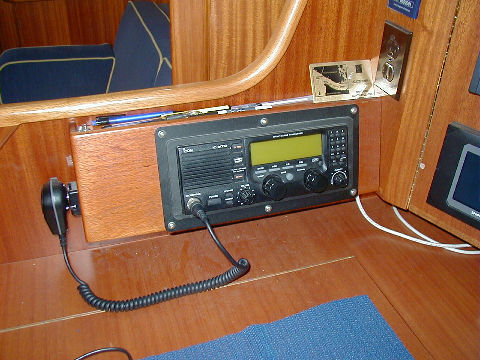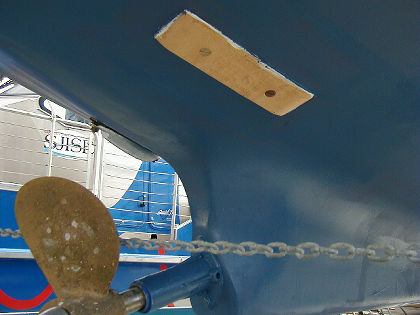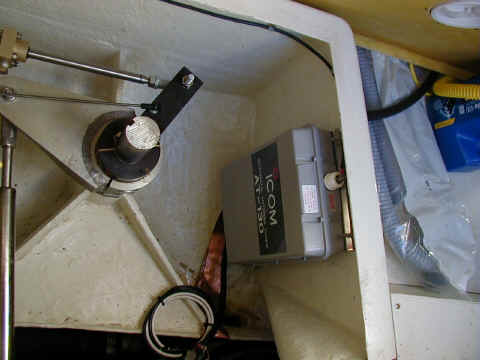Installing a Single Sideband Radio
In the spring of 2002 I added an Icom IC-M710RT single sideband radio to Cats Paw. Unfortunately, just a few weeks after I bought it, Icom declared the 710 obsolete, superseding it with the Icom IC-M802! Nevertheless, the 710 is an old warhorse in the cruising world --- you can't go wrong with it. I also used an Icom AT-130 antenna tuner --- still in production, and still the best!
The installation is very involved, touching almost every aspect of the boat.
The 710RT consists of two parts: a "control head" and a remotely located "black box" that contains the actual HF electronics.

A good ground is essential for HF radio. Unfortunately, this is more of a black art than a science, with lots of learned opinions on the One True Way and you are doomed to eternal damnation if you try it any other way.

What to do? I relied on the wisdom of Admiral Grace Hopper: "One accurate measurement is worth a thousand expert opinions." I decided to start with something utterly simple and if it didn't work, well, I'd start adding things until it did. Because I was planning on hauling the boat out on the hard for its annual bottom paint, I took the occasion to add a Guest Dynaplate. This is a sintered bronze plate that offers excellent conductivity to the surrounding sea water.

The ideal location for the antenna tuner is somewhere close to the HF ground and to the antenna, because both leads should be as short as possible. I found the ideal location in the the compartment that covers the top of the rudder. It was essentially "dead space" anyway, because it is not easy to get to, so I didn't use up valuable storage space.
For the antenna, I used an insulated backstay. Because Cats Paw has a split backstay, the lower insulator was put just above where the split is located. The antenna is fed using GTO wire from the tuner. The wire is led along the starboard split of the backstay, with some standoffs made of bits of PVC pipe.
To connect the GTO wire to the backstay I first served about a 2" stretch of the backstay using monel wire. Then, putting a "U" in the GTO wire so the cut end would be pointing down, I used another piece of monel wire to seize it onto the backstay. The "U" is there to prevent water ingress into the cut end of the wire. I then coated everything with silicon grease and finished off with a few wraps of rigging tape. A nice additional touch would be to use some conducting paste for better conductivity between the GTO wire and the backstay, but I couldn't find any.
How's it work?
I've found that the radio works very well at the lower frequencies, up through about 18MHz, where the Dynaplate acts as kind of a direct shunt to ground. At higher frequencies (particularly the 15 meter bands), reception falls off. At some point I plan to add a grounding radial tuned to 21 MHz, to improve performance at these frequencies.
The SSB is used for both email and weatherfaxes. For email, I use an SCS Pactor III modem. Its ability to pull a digital signal out of what sounds to my ear like trash, is impressive. For weatherfax, I use JVCOMM, a bit of inexpensive shareware, to decode the signal. JVCOMM does not actually require a modem — the modern computer is fast enough that it can digitize the signal through the microphone input.
The final bit of equipment needed is a laptop computer. Nearly any will do. Mine is a Dell Latitude CSx. I also picked up a spare CSi for $170 on eBay. Someday, I'll write up how this is all hooked together, as well as some software details.